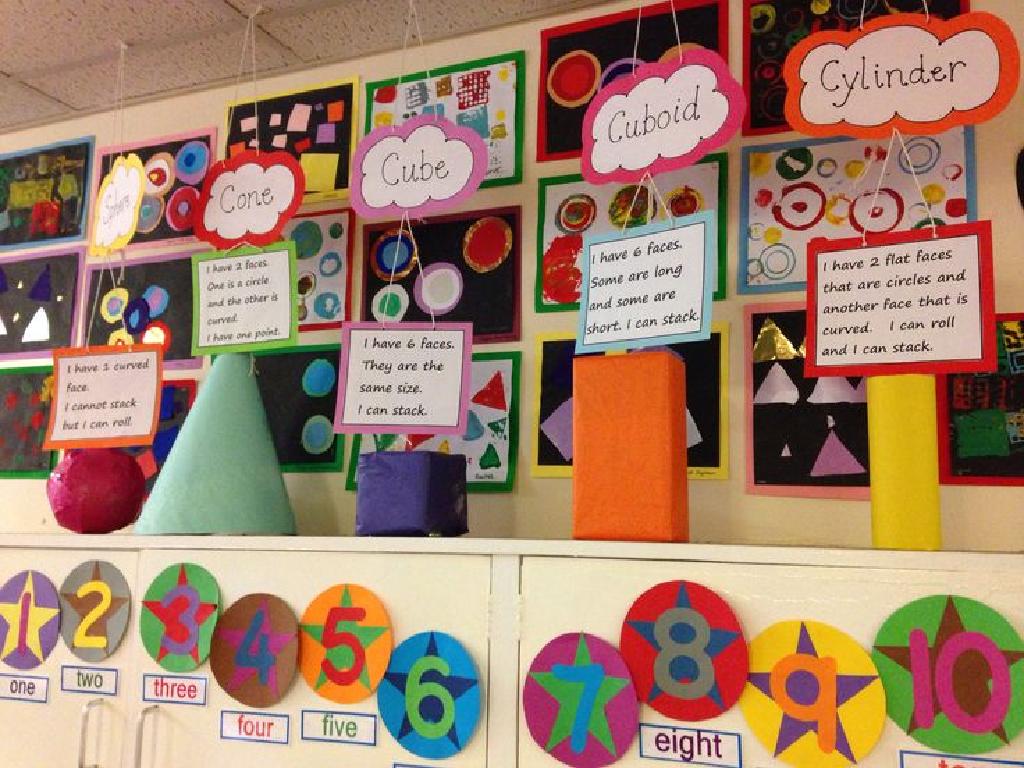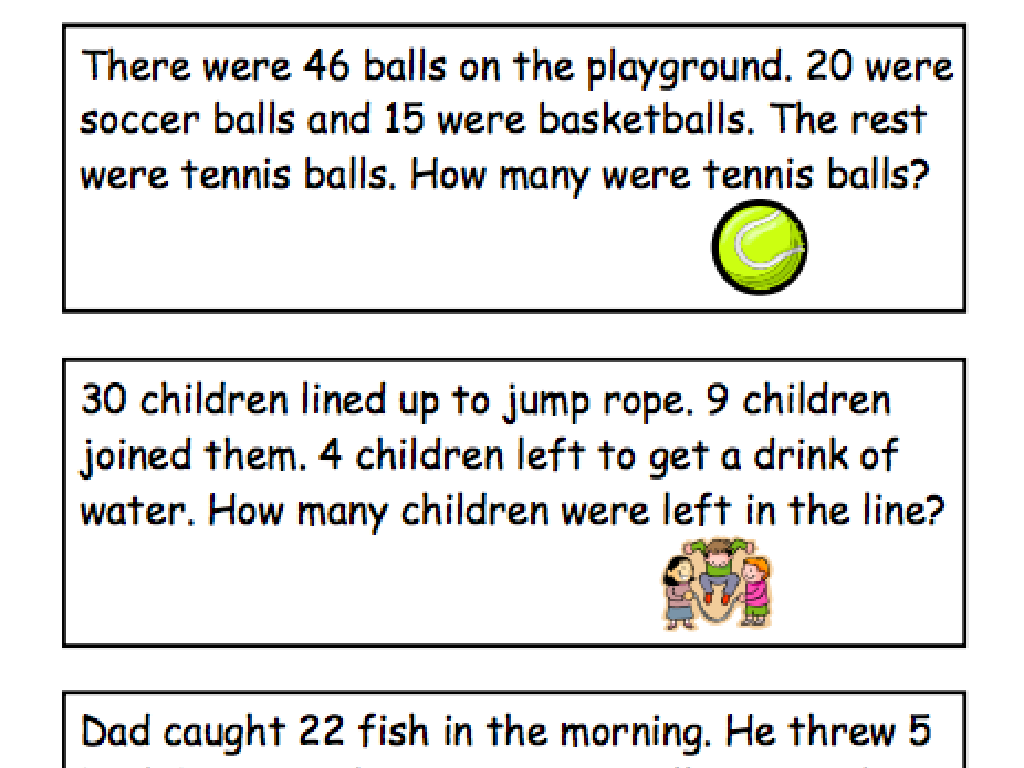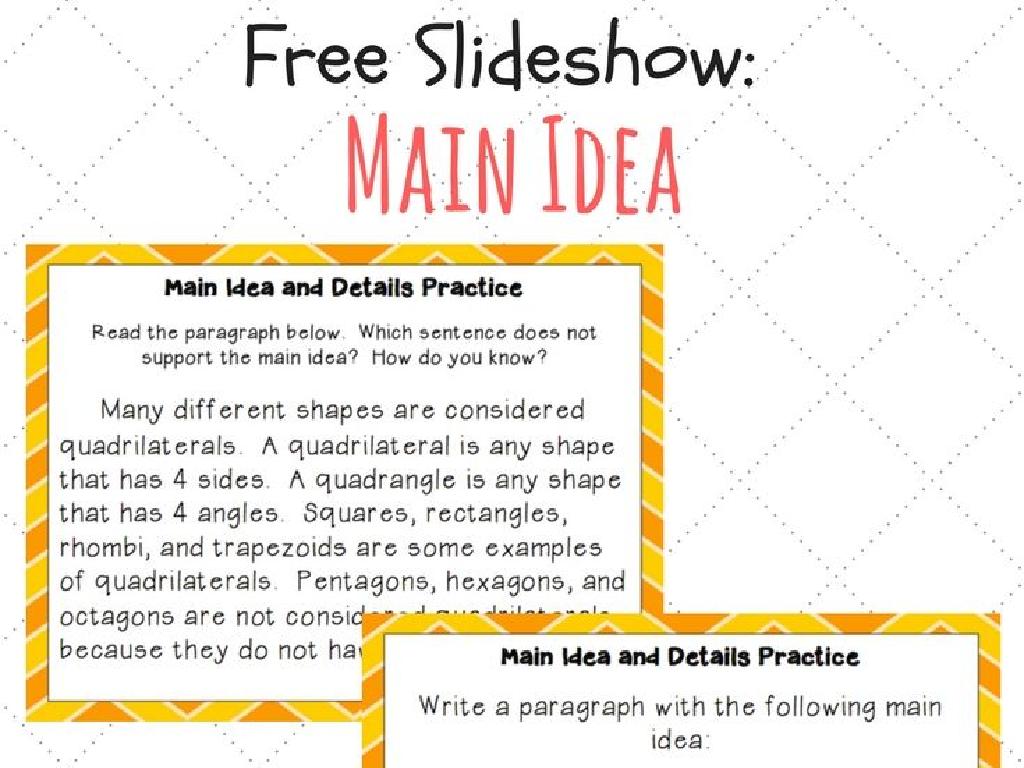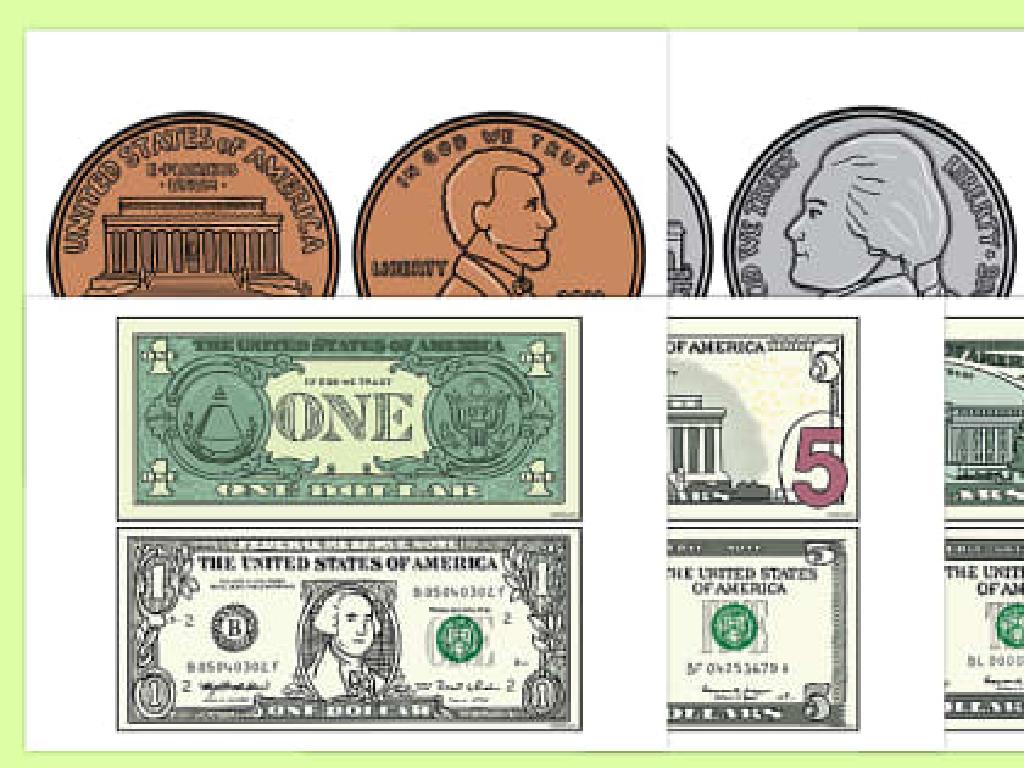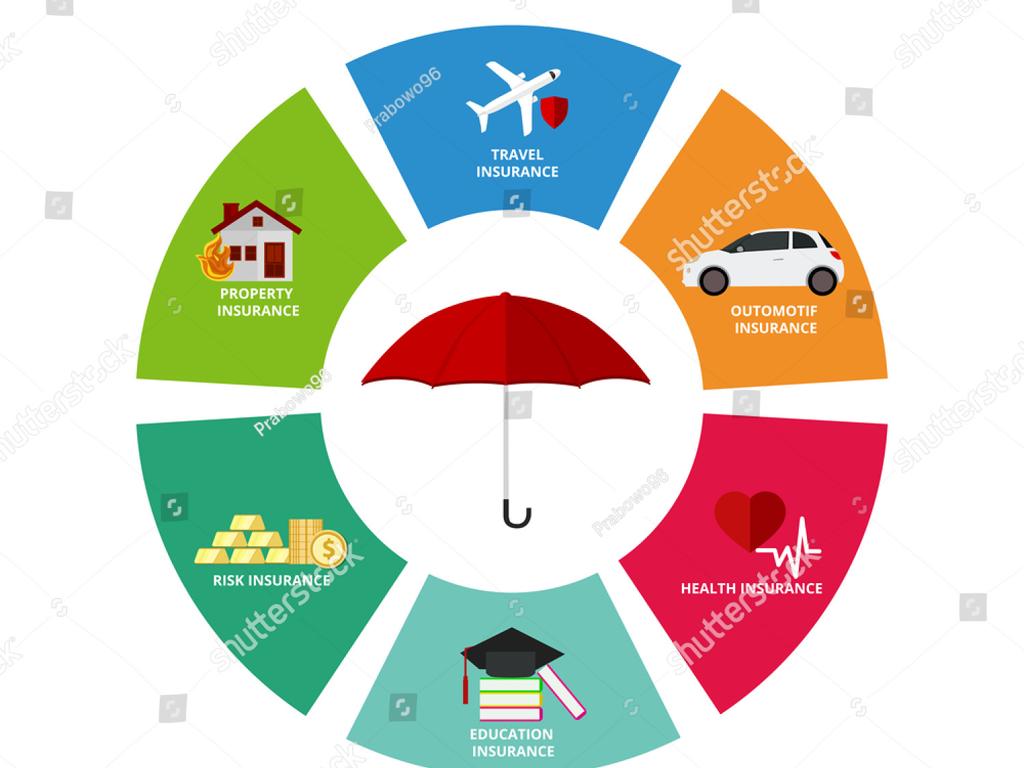Put Two Syllables Together To Create A Word: Easier
Subject: Language arts
Grade: Second grade
Topic: Two-Syllable Words
Please LOG IN to download the presentation. Access is available to registered users only.
View More Content
Today’s Adventure: Syllables!
– What’s a syllable?
– A syllable is a word part with one vowel sound.
– Let’s clap syllables!
– Clap once for each syllable: Sy-lla-ble.
– Syllable examples
– Examples: wa-ter, pen-cil, but-ter-fly.
– Create two-syllable words
|
This slide introduces the concept of syllables to second graders. Begin by explaining that a syllable is a part of a word that contains a single vowel sound. Demonstrate clapping for each syllable in a word to help them identify syllables by sound. Use simple, familiar words as examples and clap out each syllable together. Encourage the students to participate by clapping along. After practicing with a few examples, challenge the students to create new two-syllable words by combining syllables. This interactive approach helps students understand and identify syllables in words, which is a fundamental skill in reading and pronunciation.
Understanding Syllables: Let’s Clap It Out!
– Syllables are like word beats
– Each syllable is one beat or clap when we say a word
– Clap to find syllables
– Practice with your name
– Say your name and clap for each part you hear
– Examples: An-na, Ben-ja-min
– An-na has 2 claps, Ben-ja-min has 3 claps
|
This slide is designed to help second graders understand the concept of syllables, which are like the rhythm or beats in words. By clapping for each syllable, students can physically engage with the lesson, making it easier for them to grasp the concept. Start by explaining that syllables are parts of words and each part gets a clap. Then, have students practice finding syllables by clapping to the rhythm of their own names and some common examples. Encourage them to listen for the breaks between claps to determine the number of syllables. This activity not only makes learning fun but also enhances their phonological awareness, an essential skill in reading and language arts.
Building Blocks of Words: Syllables
– Syllables are word pieces
– Like blocks, syllables build words
– Combine syllables to form words
– ‘cup’ + ‘cake’ makes ‘cupcake’
– Example: ‘cup-cake’
– ‘but-ter’ + ‘fly’ makes ‘butterfly’
– Example: ‘but-ter-fly’
|
This slide introduces the concept of syllables to second-grade students, explaining that syllables are parts of words that come together to create the whole word, much like building blocks. Use examples that are familiar to the students, such as ‘cupcake’ and ‘butterfly,’ to illustrate how two syllables can be combined to make a new word. Encourage the students to clap out the syllables for each example to reinforce the concept. In the next class, plan activities where students can practice combining syllables to form words, and identify the number of syllables in words they already know.
Let’s Practice Syllables!
– Clap and count syllables
– Practice words: apple, banana, computer
– Apple has two claps: ‘ap-ple’
– How many syllables in each?
– Banana has three claps: ‘ba-na-na’
– Listen, clap, and count together
– Computer has three claps: ‘com-pu-ter’
|
This slide is for a class activity focused on syllable counting. The teacher will guide the students to clap their hands with each syllable of the given words to help them understand how to break down words into syllables. For example, when saying ‘apple’, students should clap twice: once for ‘ap’ and once for ‘ple’. The teacher should demonstrate first and then let the students practice. Possible variations of the activity could include having students walk in place for each syllable, use musical instruments like tambourines or drums to mark syllables, or create a syllable sorting game where students group words by the number of syllables. The goal is to make the learning process interactive and fun, helping students to better understand and identify syllables in words.
Creating Two-Syllable Words: Let’s Combine!
– Two syllables join to make a word
– Example: ‘star’ + ‘light’ = ‘starlight’
– ‘star’ is one syllable, ‘light’ is another, together they form ‘starlight’
– Now it’s your turn to try
– Choose two syllables and make a new word
– Think of words and combine them
– Use your imagination to mix and match syllables
|
This slide is designed to teach second-grade students about creating two-syllable words by combining two single syllables. Start by explaining what a syllable is and how words can be broken down into syllable parts. Use ‘starlight’ as a clear example to show how two different syllables can be combined to make a new word. Encourage the students to think of their own syllables and create new words as a class activity. Provide guidance and ensure they understand that not all syllable combinations make a real word, but it’s a fun exercise in creativity and understanding word formation.
Making ‘Easier’ with Syllables
– Break down ‘easier’: ea-sier
– Clap each syllable together
– Clap once for ‘ea’ and once for ‘sier’
– Practice saying ‘ea’ and ‘sier’
– ‘ea’ as in ‘eat’, ‘sier’ as in ‘sir’
– Now, combine them: ‘easier’
|
This slide is aimed at helping second graders understand how to form two-syllable words by breaking them down and putting them back together. Start by demonstrating how ‘easier’ can be divided into two parts: ‘ea’ and ‘sier’. Have the class clap once for each syllable to get the rhythm of the word. Then, practice saying each part separately, emphasizing the distinct sounds of ‘ea’ and ‘sier’. After practicing each syllable, guide the students to say the whole word ‘easier’ together. This exercise will help them recognize syllable patterns and improve their ability to read and form longer words. Encourage the students to try with different words and to listen for the breaks between syllables in spoken language.
Class Activity: Syllable Match Game
– Match syllable cards to form words
– Pair up and find many words
– Share your words with the class
– Have fun learning new words!
|
This interactive class activity is designed to help second-grade students understand the concept of syllables and how they combine to form words. Provide students with sets of syllable cards. In pairs, they will match these cards to create two-syllable words, such as ‘easier’. Encourage them to find as many words as possible within a set time limit. After the activity, ask pairs to share the words they’ve created with the rest of the class, promoting discussion and reinforcing their learning. Possible variations of the activity could include a syllable scavenger hunt, timed challenges, or creating the longest word competition.
Syllable Review & Practice
– Recap on syllables
– Syllables are parts of words, like ‘eas’ and ‘ier’ in ‘easier’
– Practice combining syllables
– We’ll put parts together to form whole words
– Get ready for a syllable game
– A game is coming to help us learn syllables
– Making learning fun
|
This slide is aimed at reviewing the concept of syllables, which are like building blocks for words. Remind the students that each syllable typically has a vowel sound. Use examples like ‘eas-ier’ to show how two syllables come together to make a word. Engage the class with a few practice words, breaking them down into syllables and then reassembling them. Prepare the students for an upcoming fun game that will reinforce their understanding of syllables. The game could involve clapping out syllables, syllable matching, or a word-creation relay. This activity will not only solidify their grasp of the concept but also keep them excited about learning.

